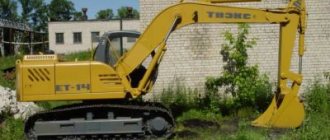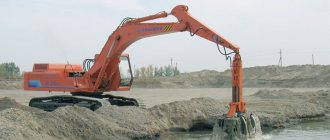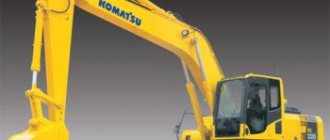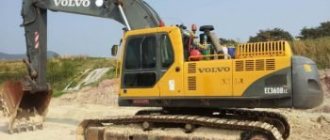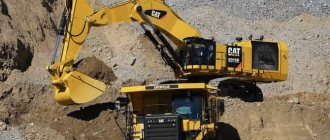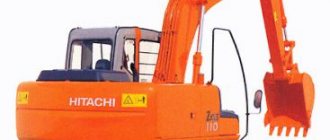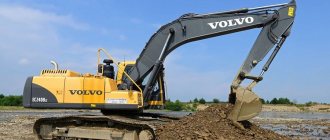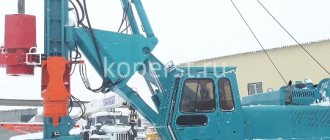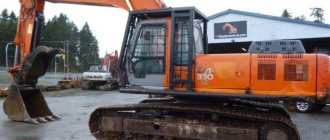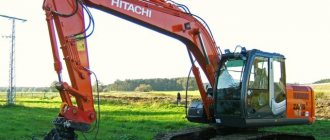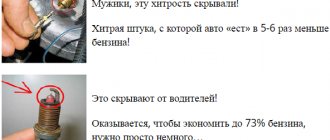The JCB 330 heavy crawler excavator is a full-rotary model on a box-shaped platform with a reinforced boom. This is the most powerful modification in the manufacturer’s line for long-term continuous operation.
In addition to the main functionality, the owner receives a minimum operating budget, serious guarantees, and operator convenience during operation.
Description of the JCB 330 excavator
The main advantages of the design of this special equipment are:
- Lubrication life of the handle and boom is 1,000 hours;
- the frequency of oil changes in the hydraulic drive is 5,000 operating hours;
- oil purification 1.5 microns (Plexus filter);
- four-mode AMS system for on-board computer;
- JCB's own development of the Dieselmax 672 engine;
- increasing pressure inside the hydraulic system with the Powerboost system.
Shock, cyclic, and other loads that arise during the operation of loading equipment are compensated by a box-shaped platform, providing a safety margin for the maximum service life of the excavator. Before assembly, components undergo multi-level control in accordance with industry standards.
The engine complies with Tier 4i, Stage 3b standards and has a power of 210 kW.
The control joystick has settings for a specific operator and differs in design features:
• switching speeds with a button; • presence of the XX key for smooth adjustment of speed; • secondary switches within the operator's reach (near the levers), facilitating the activation of the machine's control elements.
Users note the panoramic view of the construction site and loading area, achieved due to the increased glazing surface and thoughtful placement of lighting equipment.
The AMS control system provides several levels of operation:
• L – lifting mode, engine power take-off at 55% in combination with 68% hydraulic system activity; • P – for precision operations, motor load at 55%, hydraulics at 90%; • E – economical mode, 80% drive power combined with 95% hydraulic system; • A – automatic, 100% load on the power unit, hydraulic system.
Thus, the automation calculates the optimal ratio without human intervention. The service life of power units increases and fuel is saved.
JCB 8018: technical characteristics, scope of application.
Review of the JCB 160 mini loader here.
KamAZ 4310 technical specifications here.
Characteristics of the 330 excavator model manufactured by JCB
With a dead weight of 33.8 tons and dimensions of 10.95 x 2.99 x 3.85, the equipment has sufficient maneuverability and is capable of moving at a speed of 5 km/h. The JCB 330 crawler excavator has technical characteristics:
• bucket – holds 1.85 cubic meters of soil and bulk materials; • pit depth – 7.39 m; • hydraulic system – capacity 2.29 liters per minute at a pressure of 319 bar; • breakout force – 268 kN, 270 kN on the bucket and handle, respectively; • engine power – 181 hp. With.
When assembling excavators
multi-stage fuel filters (water separation, 30, 2, 2 micron purification stages), Kayaba hydraulic distributors, Kawasaki pumping equipment, Berco tracks are used. The boom and handle are reinforced with internal partitions and equipped with wear-resistant linings.
Hydraulic cylinders of the handle and booms have end dampers that compensate for shock loads, increasing operator comfort. The excavator frame has an X-shaped design for greater stability when turning with a full bucket. In addition to the main hydraulic lines, the manufacturer offers additional units with low hydraulic flow.
Jcb 330 excavator technical specifications – Special equipment
This equipment belongs to heavy construction machines, the main characteristics of which should be high power and quality.
The use of the machine is not limited to flat surfaces thanks to the latest developments embodied in the JCB 330 excavator. Increased stability ensures trouble-free operation of the equipment on inclined surfaces. The chassis has also undergone changes and has become longer.
JCB 330 crawler excavator
Return to navigation
Features and Benefits
The bucket volume of 1.85 m3 allows you to effectively use the excavator for work with a tight time frame or work at depth. Maneuverability and mobility are not limited to the presence of a bucket and counterweight.
The main purpose of the machine is to develop pits or trenches, and to excavate and move the excavated soil. Rotation of the working element is possible when loaded by the same amount as when unloaded.
The base of the JCB 330 excavator is thought out to the smallest detail; the development was based on existing models and experience in their operation.
JCB 330 excavator
The performance of the Jisibi 330 machine is tripled compared to older models, and the range of applications is wider than some modern high-end models. Working conditions do not matter, because...
Initially it was planned to use this technique in heavy duty. The presence of marshy or weak foundations is not a problem; thanks to the caterpillar track, the machine has high maneuverability.
Breakout force can be increased by 10% by increasing hydraulic pressure. This specific feature adds weight to the technology in the eyes of the buyer. The monitor located in the operator's cabin displays data based on which it is possible to optimize fuel consumption, work efficiency and increase productivity. The data comes from the AMS management system.
Excavator Jisibi 330. Photo
The service life of both the Jisibi 330 machine itself and its individual elements is quite impressive, because All materials used are of high quality and resistance to impact.
The advantages of the JCB 330 excavator include:
- strength. The steel used to make the frame has increased resistance to mechanical stress. The cross-shaped frame profile increases the rigidity of the structure and prevents mechanical damage. The plate located below is made in one piece and strengthens the working body - the boom. Partitions perform the same function;
- efficiency. The engines are manufactured in the same factory as the car. This allows you to strictly adhere to all the parameters necessary for trouble-free operation in difficult conditions. Engine power is increased by 25% compared to other engines for equipment in this class. This power guarantees increased technical characteristics of Jisibi 330. The carriage, the installation and dismantling time of which is very short, is used for installing attachments. A modern hydraulic system allows for economical use of fuel when idle;
- convenience and safety. Thanks to innovations, the operator's cabin is now not only more comfortable, but also increased safety. This became possible due to the increased viewing angle. Control carried out from the cabin is highly accurate, and hydraulics allow you to apply less effort to perform work operations;
- ease of maintenance. In addition to a simplified technical inspection system, the machine also requires fewer of them, because The quality of technology allows you to increase the intervals between them. The oil is changed after 5 thousand hours of operation, and the lubricant is changed after 1 thousand. The accessibility of the main components guarantees quick replacement and reduces equipment downtime, and the hood is lifted using pneumatics. The electronic panel displays errors, which reduces the time to determine the cause of the breakdown.
Return to navigation
Modifications
Machine modifications directly depend on the installed equipment. In addition to work of increased complexity, the machine can be used in agriculture, for landscaping, in public utilities and other areas.
Return to navigation
Technical characteristics and dimensions
For ease of understanding, the main technical characteristics of the JCB 330 excavator are summarized in the table:
ParameterValue
| Weight | 32-33.3 t |
| Unloading height | 13.321 m |
| Ground clearance | 0.5 m |
| Maximum speed | 5 km/h |
| Digging radius | 21.65 m |
| Track | 2.6 m |
| Wheelbase | 3.91 m |
| Maximum traction force | 244 kN |
| Bucket volume | 1.85 m3 |
| Maximum breakout force on bucket | 19500 kgf |
| Maximum handle force | 20000 kgf |
| Digging depth | 17.5 m |
JCB 330 dimensions:
ParameterValue
| Transport length | 11.05 m |
| Height | 3.1 m |
| Width | 3.2-3.5 m |
JCB 330 fuel consumption is 14-18 liters per hour of operation.
Return to navigation
Position of the JCB 330 excavator in the special equipment market
The JCB 330 crawler excavator confidently leads the ranking of earthmoving machines in its class, the characteristics of which are superior to those of competing models. Thanks to the Smart Control control system, high torque is achieved even at low speeds combined with smooth operation.
A number of additional options make the excavator a universal special equipment with wide capabilities:
• quick-release carriage – reducing the time for changing equipment; • oil regeneration system – flow bypassing the cylinders reduces both slurry consumption and operation time; • automatic mode XX – the automation notices the absence of work, and after the time specified in the settings, it reduces the engine speed.
Compared to competing tracked vehicles, the JCB 3300 delivers 27% more torque, 25% more drive power and 12% more productivity at a slight increase in price. The time of all main cycles (turning, bucket lifting) is reduced to a minimum.
The manufacturer has provided literally every little detail for the operator’s convenience. For example, the ventilation system is balanced with cabin heating, which makes it impossible for the windows to fog up. The size of the pedals, the grip of their surface with shoes, and the floor area inside the cabin have been increased. There is a special compartment behind the operator's seat for personal belongings.
JCB 5CX - description, technical characteristics, advantages and video.
Technical specifications of the JCB 4CX backhoe loader can be found here.
Review of the JCB 3CX backhoe loader in this article.
JCB 330 excavator price
Reducing fuel consumption by 30% is possible thanks to an upgraded cooling system, variable fan speed, and EcoMax diesel combustion technology. This significantly saves the owner’s operating budget and reduces the payback period of special equipment.
The high price for the JCB 330 crawler excavator pays off for any use of special equipment. Productivity is increased by control systems, the bucket lift-off cycle time is reduced, and when starting at idle, fuel is saved. The minimum flow required for the operation being performed is supplied to the hydraulic system from the distributor due to the rational configuration of the valves and an optimized hydraulic pump.
The purchase of a JCB 330 crawler excavator is recommended for construction organizations to obtain a stable profit. In its class, this special equipment has the best set of characteristics, saves the owner’s budget with minimal maintenance, economical fuel consumption and hydraulic fluid.
The revs fluctuate and the JCB JS330LC excavator stalls.
JCB JS330LC crawler excavator
- Computer diagnostics of an excavator
- Checking the JCB Throttle Position Sensor
- Block diagram of the electronic control unit ECU-1
- Checking the integrity of electrical wiring and harness.
- Repair of EECU1 controller for JCB 332/K6848, 728/35700 excavator
JCB JS330LC crawler excavator. A customer complains about a problem with engine speed. After starting, after 15...20 minutes, the speed begins to spontaneously rise or fall. Sometimes the speed on the excavator ceases to be regulated, the engine idles, and sometimes even stalls.
The excavator is equipped with an Isuzu AA-6HK1XQB-01 engine with a mechanical injection pump and electronic speed control.
Engine Isuzu AA-6HK1XQB-0
We agree on a time for departure with clients, fill out an application and go to the place. Upon arrival, we first interview the client about this malfunction, find out the nuances in the behavior of the equipment and begin troubleshooting. First, let's look at the errors that are displayed on the monitor screen when a malfunction occurs.
Monitor JCB 728/19700
The display shows no faults. Next, we connect the computer to the diagnostic connector located behind the operator’s seat and launch the ServiseMaster , it will help us detect this malfunction, read errors and view the current operating parameters of the engine and electronics.
Diagnostic connector JCB deutz 9 pin
Computer diagnostics of an excavator
We launch the program itself and in the main menu go to the “diagnostics” folder. We check the current parameters, values, readings of sensors, measuring devices.
Program for diagnosing JCB ServiceMaster equipment
In the engine operating parameters, select the control tab for the injection pump and speed control.
Smoothly rotate the speed control knob from minimum to maximum to ensure operation.
JCB speed control knob
When you rotate the adjustment knob, the Throttle Set Dial should change from 200 to 4500. This indicator is displayed on the screen.
ServiceMaster, check the Throttle Set Dial parameter
If the readings ( Throttle Set Dial) on the computer screen change in proportion to the change in the position of the speed control knob, this indicates that our speed control is working properly and the actuator part needs to be checked. The signal from the speed controller is sent to the electronic control unit ECU1 728/35700 JCB-HP behind the operator's seat. The electronic control unit analyzes the signal and, depending on the position of the speed control knob, sends a PWM signal to the electronic hydraulic valve (actuator) Throttle Control Valve.
Schematic diagram of JCB excavator speed control
Throttle Position Sensor) is installed on the rods controlled by a hydraulic valve , which measures the current value of the injection pump drive. The rods, in turn, move the injection pump rod and the engine speed changes up or down. The speed will only change if the ECU1 728/35700 JCB-HP sees the current value from the drive position sensor (feedback). If for some reason the sensor ( Throttle Position Sensor) or gives incorrect readings, then the revolutions will float and freeze.
We check the feedback readings from the drive position sensor ( Throttle Position Sensor).
The Throttle Position Sensor parameter does not change, it is equal to zero!
When the speed control knob in the cabin is at its maximum value, the Throttle Position Sensor does not change. What can be concluded?
- Faulty drive position sensor, throttle position sensor ( Throttle Position Sensor) STEER ELOBAU SENSOR 716/30179, 716/30180 JCB
- Electrical wiring is faulty. Short circuit, breakage, oxidation of harnesses and connectors.
- Control unit ECU1 728/35700 JCB-HP
According to the client, he has already replaced the Throttle Position Sensor . After replacing the sensor, the problem disappeared for a few days, but then reappeared.
Actuator position sensor ANGLR SENSOR ELOBAU
The sensor is located at the rear of the excavator. Rods and an electronic hydraulic valve controlled by a PWM signal are connected to it.
Sensor STEER ELOBAU SENSOR 716/30179, 716/30180 JCB
Checking the JCB Throttle Position Sensor
First, let's make sure the sensor itself is working. Checking it is quite simple; first you need to remove it and apply power to the sensor. By rotating the sensor rod in one direction or another, the output signal should vary from 0 to 5 volts. In our case, there was no change in the signal; the sensor was 100% inoperable.
Pinout of the throttle position sensor connector +5, signal, ground
Three wires go to the Throttle Position Sensor +5 volts, signal and ground. We measure the signals at the sensor connector coming from ECU1 728/35700 JCB-HP.
We remove the connector from the sensor and use a multimeter to measure the voltage.
Throttle Position Sensor connection diagram
We have +5 volts, but the reference voltage on the signal wire jumps from 3 volts to 7. This is already a strange picture. Perhaps there is a short circuit in the wiring to positive somewhere? Or the ECU1 728/35700 JCB-HP
We check the integrity of the electrical wiring from the position sensor to the ECU1 728/35700 JCB-HP unit. The control unit is located behind the operator's seat.
Location of ECU1 behind the operator's seat
In order to get to the unit, you need to remove the plastic casing with air ducts. Unscrew the seven bolts securing the casing and remove it.
Block diagram of the electronic control unit ECU-1
Let's look at the block diagram of the electronic control unit ECU-1 .
Block diagram of the electronic control unit ECU-1
ECU1 728/35700 JCB-HP control unit controls input (INPUT) signals from sensors (SENSOR) , switches (SWITCHES). Controls actuators, solenoids (SOLENOIDS) . Turns on the lighting lamps (LAMPS) , and also controls the operation of the engine. The signals processed by this unit are sent via the CAN communication line (NETWORK) to the monitor, and if any malfunctions occur, the display displays errors.
Controller JCB ECU1 728/35700 JCB-HP
Checking the integrity of electrical wiring and harness.
Signals from the sensor are sent to connector “A” of the electronic unit ECU1 728/35700 JCB-HP . We unscrew the connector with a hexagon and check the voltage on the signal wire - it is zero. Next, we check the integrity of the wires from the block to the sensor. The wires SG, WG, S to the block are intact, we also load these wires with a powerful light bulb to prevent poor contact, oxidation, and breaking of the wires.
Pinout of ECU1 728/35700 JCB-H (connector “A”)
An important rule when checking circuits with a power load lamp is to turn off the sensor units located on the test line.
In case of electrical wiring repairs, our team of specialists is always ready to repair a faulty harness on-site; for this purpose, we always have the necessary wires and consumables in our arsenal. We also provide a WARRANTY for the repairs performed!
According to the test result, the wires on the equipment are in good condition, but when connecting connector “A” we still observe the same floating voltage from 3 to 7 volts. Further, for a more accurate check of the position sensor, you can connect a special device with a bank of resistances to emulate the signal. That's what we do. We connect the device instead of the position sensor and apply a reference signal of about 1.5...3 volts to the signal pin.
Emulator of various signals with a bank of resistances
We reconnect to the equipment and in the ServiceMaster program we check the readings of the Throttle Position Sensor parameter. In addition to this procedure, the program has many other checks. You can view input values from various sensors, check the operation of the actuators, the condition of the hydraulics and the operation of the motor as a whole.
Throttle Position Sensor parameter when an emulator is connected
The Throttle Position Sensor values on the computer screen are zero. We connect the multimeter in voltage measurement mode and connect it directly to the signal wire on connector “A” of the control unit. We ask our partner to smoothly change the output signal from the emulator from 1.5 to 2 volts, while we watch the voltage change on a multimeter.
Repair of EECU1 controller for JCB 332/K6848, 728/35700 excavator
The input voltage supplied from the emulator comes to the control unit. The block itself does not react to signal changes in any way. We conclude that the electronic control unit is faulty and requires repair. Unscrew the 3 bolts securing the block using a hexagon and remove it.
Controller ECU1 728/35700 JCB-HP .
After opening the control unit and checking it, several faulty elements were found that responded to the position sensor input signal
Our company produces high-quality repairs of electronic control units, ECUW and ECU1 JCB 332/K6848, 728/35700 excavators of any complexity. We provide a WARRANTY for all work performed.
Controller JCB 332/K6848, 728/35700
After the repair and testing of the control unit in the laboratory, we install this unit on the equipment, install a new position sensor STEER ELOBAU SENSOR 716/30179, 716/30180 JCB and take measurements.
Throttle Position Sensor shows the current position of the sensor (feedback)
We start the engine and watch the speed change by rotating the regulator knob. Changes in the input signal (feedback) Throttle Position Sensor . The technology is working!
Our team of specialists is always ready to help you in solving any complex issues related to the repair of electrical equipment for Special Equipment and Trucks. We repair electrical wiring harnesses of any complexity, on-site, and provide a WARRANTY for the repairs performed. We repair controllers, electronic control units, program and parameterize various systems.
Call and make an appointment! We are happy to help you! +7 (917) 555-000-5
Read more. JCB won't turn on...
